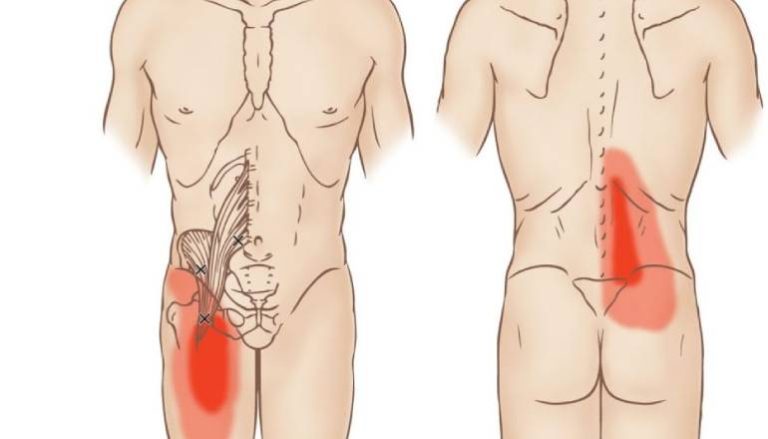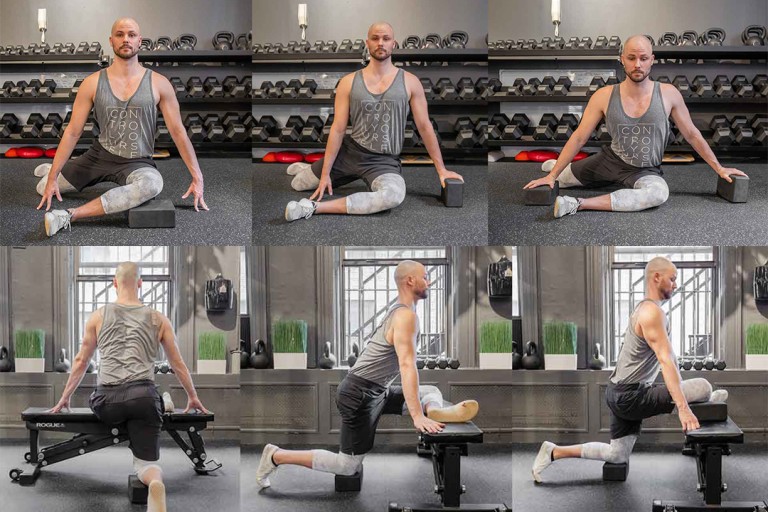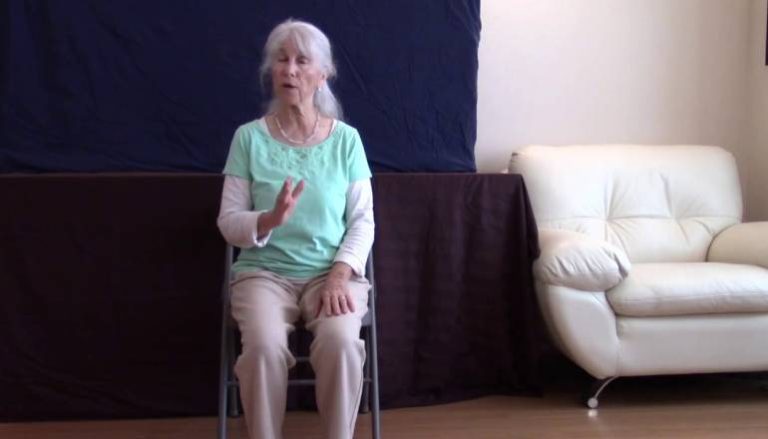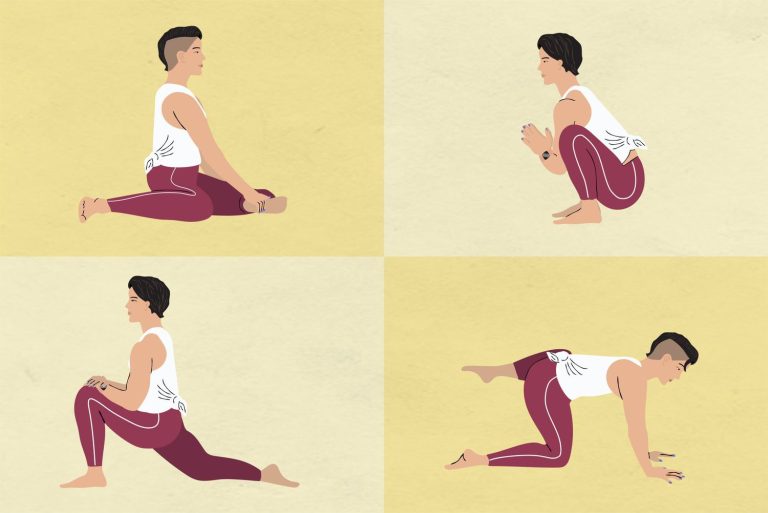Top 5 Hip Opener Stretches for Piriformis Relief: Unlock Mobility and Reduce Pain
Are you tired of dealing with hip pain and discomfort? Look no further!
In this article, we’re going to unveil the top 5 hip opener stretches for piriformis, a powerful muscle that can wreak havoc on your hip flexibility and stability. Whether you’re a seasoned runner or simply find yourself constantly plagued by nagging hip and buttock pain, these stretches and exercises are here to save the day.
From relieving tightness to alleviating sciatic nerve compression, we’ve got you covered. But remember, before diving into any new routine, always consult a healthcare provider to ensure you’re on the right track.
Don’t miss out on discovering the secret to a pain-free and more flexible hip 鈥?keep reading!
top 5 hip openers stretches for piriformis
The top 5 hip opener stretches for piriformis are the figure-four stretch, pigeon pose, bridge, side leg lifts, and clamshell. These stretches help to stretch and strengthen the piriformis muscle, which plays a crucial role in hip flexibility and stability.
Tight piriformis muscles can lead to problems and injuries for runners, lower back pain, and even piriformis syndrome where the sciatic nerve is compressed causing hip and buttock pain or leg tingling. It’s important to consult with a doctor before attempting these stretches, and to incorporate cardio and core exercises for overall hip health.
Avoiding prolonged sitting and seated exercises like biking, using an exercise band for extra resistance, and incorporating foam rolling and trigger point release can also help. Yoga and Pilates are recommended to relieve piriformis syndrome and target other tight muscles.
Consulting a healthcare professional if symptoms persist after a month is also advised.
Key Points:
- Top 5 hip opener stretches for piriformis:
- Figure-four stretch
- Pigeon pose
- Bridge
- Side leg lifts
- Clamshell
- These stretches help stretch and strengthen the piriformis muscle, improving hip flexibility and stability
- Tight piriformis muscles can lead to problems like lower back pain and piriformis syndrome
- Consult with a doctor before attempting these stretches and incorporate cardio and core exercises for overall hip health
- Avoid prolonged sitting and seated exercises, use an exercise band for resistance, and try foam rolling and trigger point release
- Yoga and Pilates are recommended for relieving piriformis syndrome and targeting other tight muscles
Sources
https://health.clevelandclinic.org/piriformis-syndrome-stretches-exercises/
https://www.verywellfit.com/piriformis-stretches-3120299
https://www.verywellhealth.com/intermediate-piriformis-syndrome-stretching-routine-4022709
https://www.wellandgood.com/hip-opening-exercises/
Check this out:
💡 Pro Tips:
1. Perform dynamic warm-up exercises before attempting piriformis stretches.
2. Include regular foam rolling and trigger point release in your routine to alleviate piriformis syndrome.
3. Consider incorporating yoga and Pilates into your exercise routine to target not only the piriformis muscle but also other tight muscles.
4. Avoid prolonged sitting and seated exercises like biking, as they can aggravate piriformis syndrome.
5. If symptoms of piriformis syndrome persist after a month of stretching and strengthening exercises, consult with a healthcare professional for further evaluation and treatment options.
1. Importance Of Hip Flexibility And Stability
The hip joint is one of the largest and most crucial joints in the body. It plays a significant role in our daily activities, including walking, running, jumping, and even sitting.
Hip flexibility is necessary to perform these movements with ease and efficiency, while hip stability ensures proper alignment and prevents injuries.
One muscle that plays a vital role in hip flexibility and stability is the piriformis muscle. The piriformis muscle is located deep in the buttocks, connecting the upper thigh bone to the lower spine.
It helps rotate the hip externally and stabilize the hip joint during various movements.
Having a weak or tight piriformis muscle can lead to problems and injuries, particularly for runners and athletes. These individuals rely heavily on their hip joints for power and stability during exercises and repetitive movements. When the piriformis muscle is not functioning optimally, it can cause imbalances and compensations within the hip joint.
2. Impact Of Weak Or Tight Piriformis Muscles
When the piriformis muscle is weak or tight, it can result in various issues and discomfort. One common problem associated with tight piriformis muscles is lower back pain.
The piriformis muscle runs parallel to the sacroiliac joint, and when tight, can disrupt the alignment of this joint, leading to discomfort and inflammation.
In addition to lower back pain, tight piriformis muscles can also compress the sciatic nerve, resulting in a condition known as piriformis syndrome. Piriformis syndrome is characterized by pain in the hip and buttock area, as well as tingling and numbness radiating down the leg. It can be a debilitating condition that significantly hampers one’s mobility and quality of life.
3. The Role Of Piriformis Muscles In Pain And Disruption
Understanding the role of the piriformis muscle in pain and disruption is crucial in addressing and managing the issues associated with it. The sciatic nerve runs beneath or sometimes even through the piriformis muscle.
When the muscle becomes tight or inflamed, it can compress the sciatic nerve, leading to the symptoms of piriformis syndrome.
The piriformis muscle’s tightness can also cause imbalance and instability in the hip joint, leading to pain and discomfort. The disruption of the sacroiliac joint can result in lower back pain, which may radiate down the leg due to the close proximity of the piriformis muscle to the sciatic nerve.
4. Understanding And Diagnosing Piriformis Syndrome
Diagnosing piriformis syndrome can be challenging as the symptoms often mimic those of other conditions, such as herniated discs or sciatica. If you are experiencing hip and buttock pain or leg tingling, it is essential to consult with a healthcare professional to get an accurate diagnosis.
Typically, a comprehensive evaluation will be conducted, which may involve a review of medical history, physical examination, and potentially imaging tests like magnetic resonance imaging (MRI) or electromyography (EMG). These tests help determine the extent of muscle tightness, nerve compression, and any accompanying structural abnormalities.
5. Seeking Professional Guidance For Stretching Techniques
Given the complexity of the piriformis muscle and its associated conditions, it is highly recommended to consult with a healthcare professional before attempting any stretching techniques. They can guide you on the most appropriate stretches and exercises based on your specific condition and needs.
Stretching and strengthening the piriformis muscle can help alleviate pain, improve hip flexibility, and enhance overall hip stability. However, improper stretching techniques or performing exercises without proper guidance can exacerbate the issue and potentially lead to further injury.
6. Top 5 Hip Opener Stretches For Piriformis Relief
- Figure-Four Stretch: This stretch targets the piriformis muscle and helps relieve tightness and tension.
Start by lying on your back with both knees bent. Cross your right ankle over your left thigh, creating a figure-four shape.
Use your hands to pull your left thigh toward your chest, feeling a stretch in your right buttock. Hold for 30 seconds and repeat on the other side.
- Pigeon Pose: Pigeon pose is an advanced stretch that deeply targets the piriformis muscle.
Start in a downward-facing dog position, then bring your right knee forward, placing it behind your right wrist. Extend your left leg behind you, keeping the toes pointed.
Slowly lower your upper body onto your forearms or all the way to the ground, feeling the stretch in your right hip. Hold for 30 seconds and repeat on the other side.
- Bridge: The bridge exercise strengthens the glutes and releases tension in the piriformis muscle.
Lie on your back with both feet flat on the ground and knees bent. Place your arms by your sides.
Press through your heels and lift your hips off the floor until your body forms a straight line from shoulders to knees. Hold for a few seconds and then slowly lower back down.
Repeat for several reps.
- Side Leg Lifts: Side leg lifts target the hip abductor muscles, including the piriformis muscle.
Lie on your side with legs stacked on top of each other. Lift your top leg toward the ceiling, keeping it straight.
Hold for a second and then lower it back down. Repeat for several reps before switching to the other side.
- Clamshell: The clamshell exercise strengthens the hip abductors, including the piriformis muscle.
Start by lying on your side with knees bent and feet together. Keeping your feet together, lift your top knee away from the bottom knee, opening your legs like a clamshell.
Hold for a second and then lower the knee back down. Repeat for several reps before switching sides.
Remember to consult a healthcare provider before starting a new exercise routine, especially if you have underlying hip or back conditions. Additionally, incorporating cardio and core exercises, avoiding prolonged sitting, and utilizing techniques like foam rolling and trigger point release can all contribute to overall hip health and piriformis relief.







